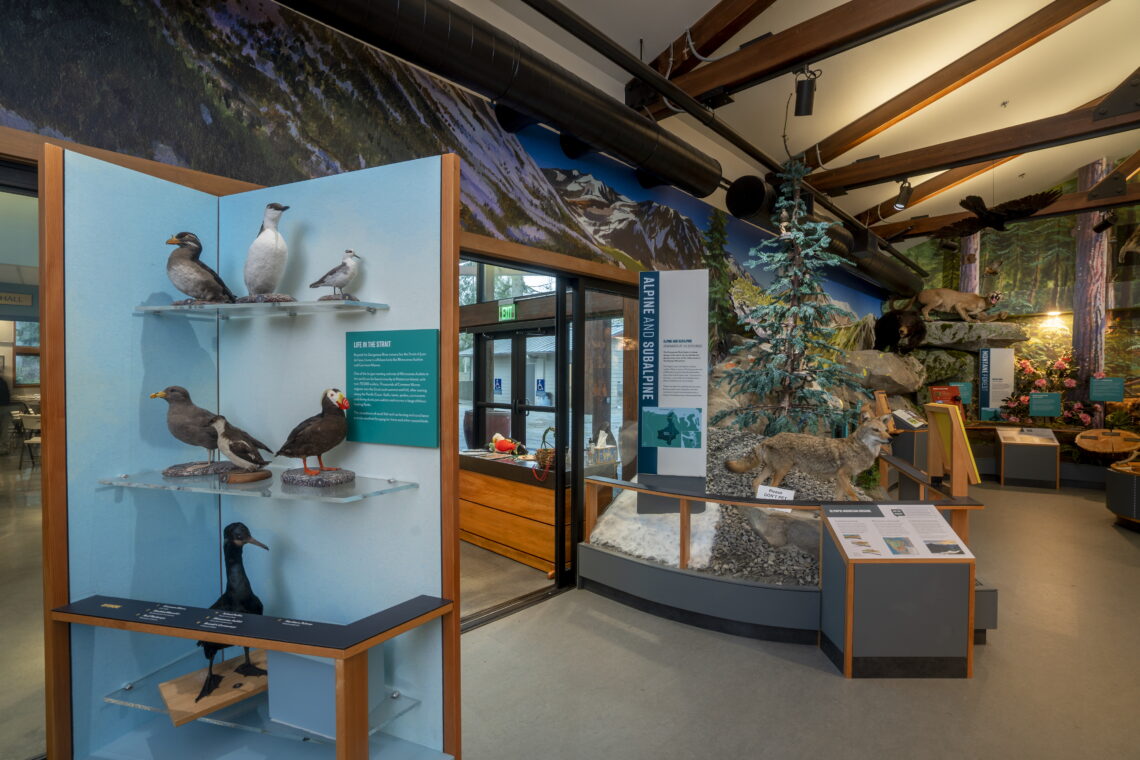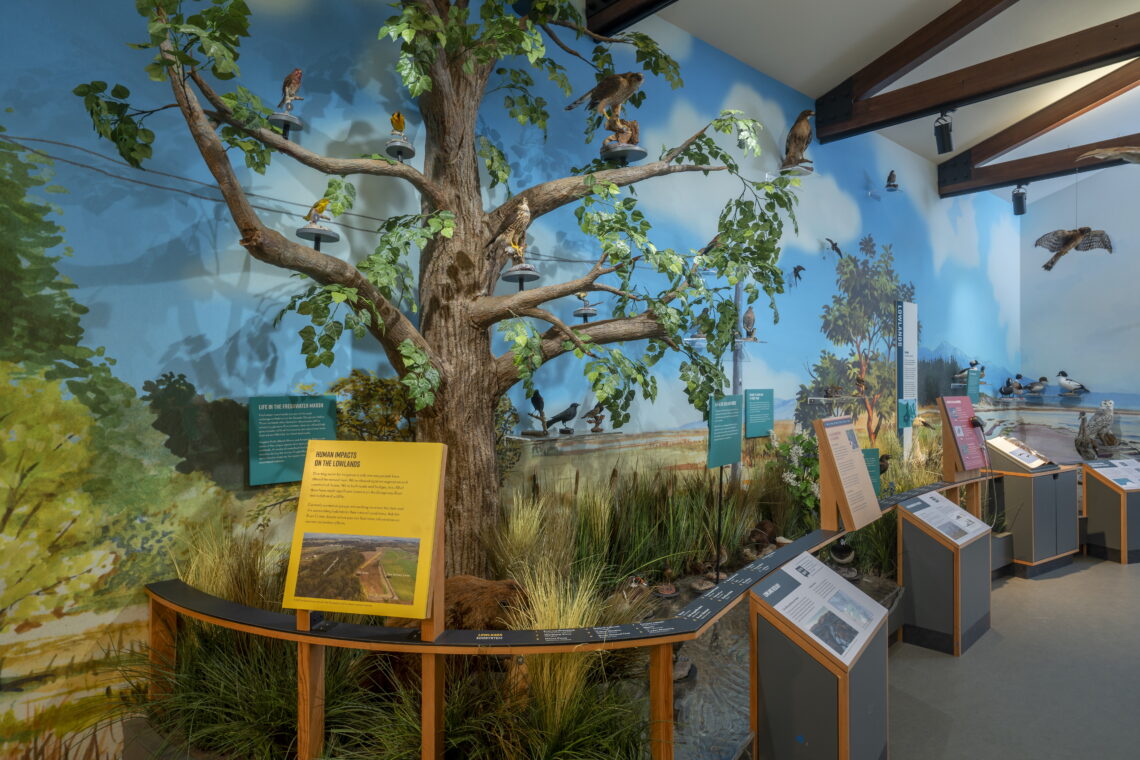Exhibits
The Dungeness River Nature Center exhibits aim to help visitors gain an appreciation and understanding of the magnitude of diversity found within the Dungeness Watershed, and how people have utilized this bountiful landscape for millennia.
Upon entering the exhibits, visitors embark on a journey through the watershed. Following the river downstream, you will experience how the surrounding ecosystems transition as the river heads towards the sea. Starting at the Dungeness River origins in the alpine/sub-alpine zone of the northeast Olympic Mountains, moving down through montane forests, riparian forests, prairie, and finally to the estuary where the river meets saltwater.
ABC Model
The exhibit uses the “ABC’s of an ecosystem” as a lens to better understand the relationships found in each ecosystem. An ecosystem is an area described by the interactions between the non-living (abiotic) and living (biotic) factors contained within it.
Abiotic: Non-living factors eg: sun, rain, wind, rock, fire.
Biotic: Living organisms eg: plants, animals, fungus
Cultural: Human uses and impacts
Each ecosystem exhibit interprets the landscape (abiotic factors) of that zone. With an explanation of the geology, precipitation, and elevation of each area, we can understand how that influences which living things (biotic factors) will thrive there. The ecosystem exhibits highlight a selection of plants and animals that live in that zone.
The story is only complete when we also investigate the role of humans (cultural), and how they interact with the land. This exhibit will focus on the relationships of the Jamestown S’Klallam Tribe with their ancestral lands. How did they use the plants and animals that live there? How did their lifestyle alter that landscape? The cultural component also includes how human impacts from climate change and environmental degradation have affected the natural balance of each ecosystem.
Taxidermy
Plant replicas, full length murals, and over 200 taxidermized native animal species can be found throughout the ecosystem exhibits. Most of the spectacular specimens in the River Center were prepared by Claude and Edna Ritze of Sequim, WA. Claude learned taxidermy at the University of Michigan during the 1930s, where he was a technician during the Depression. Following his career as an inspector at Boeing Aircraft, Claude and Edna retired to Sequim, and in 2002 they began preparing mounted specimens for our collection. Claude specialized in “100 year mounts,” meticulously prepared and mounted in lifelike poses. Claude’s skill and artistry are evident in every bird specimen he prepared. Claude passed away in 2006, but his legacy as a preparer of beautiful bird mounts continues at the Center.

Many other specimens in the Center were prepared by Mark Hanson, one of the founding fathers of the River Center and a former Sequim Middle School science teacher. Mark’s love of nature shows in the incredible collection of bones, feathers, and other natural items that he gathered during his lifetime. Mark passed away in 2005, but, just like Claude, he left behind a treasure of natural items that help make the River Center special.


